Are you ready to march through history and stand shoulder to shoulder with the greatest military minds the world has ever seen? From the Revolutionary tactics of George Washington to the slapping innovations of General Patton, history is littered with generals whose brilliance on the battlefield has become the stuff of legend. These are the men and women who saw not just the fight in front of them, but the grand strategy that would lead their nations to victory or defeat.
In this quiz, we’ll explore the tactics, triumphs, and sometimes tragedies of America’s most iconic generals. Whether you’re a seasoned historian or just someone who appreciates a good battle story, this quiz will test your knowledge of the military leaders who shaped our world with their courage, intelligence, and will to win. Ready your wits and prepare to charge into the fray with this new history quiz!
Question 1. Who was the father of Douglas MacArthur, serving in the position of Lieutenant General?

A. John Pershing
B. William Sherman
C. Arthur MacArthur
D. George Patton
Answer 1: C. Arthur MacArthur

Insight: The famous military leader Douglas MacArthur was the son of Arthur MacArthur, who held the distinguished rank of lieutenant general. As a lieutenant general, he had a significant impact on his son’s military career and left a long legacy of service to his nation.
Question 2. Union General William Tecumseh Sherman was both a successful battlefield commander as well as a man who had a way with words. Sherman succinctly summed up the nature of war with this quote: “War is .”
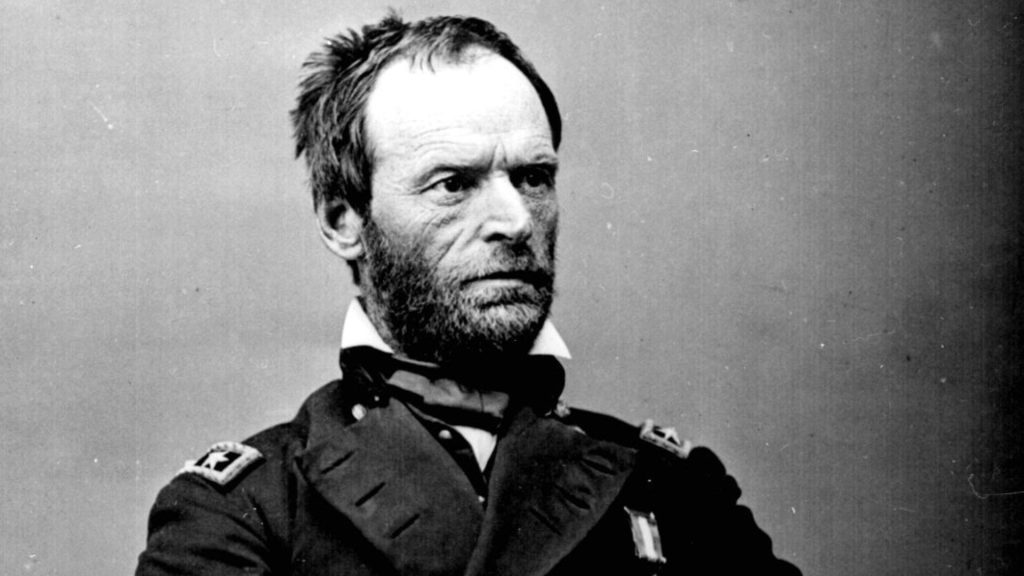
A. fun
B. hell
C. profitable
D. terrible
Answer 2: B. hell
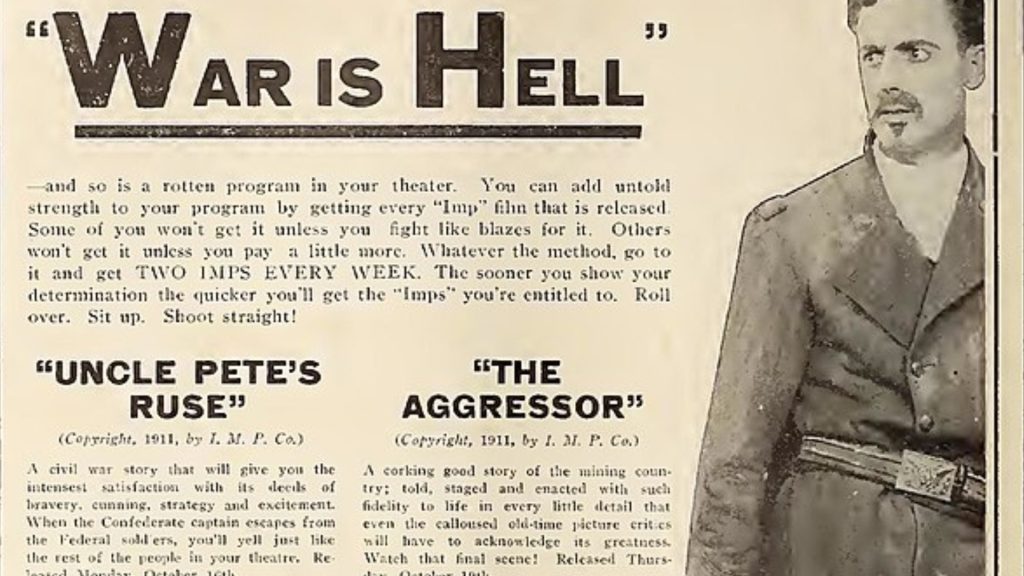
Insight: Post-war, Sherman addresses cadets at a military academy, saying that war is a painful experience. He emphasized the brutal reality of war, summarizing its horrors as “war is hell.”
Question 3. Which general was given the massive task of leading the American armies in France during WWI?

A. John Pershing
B. Ulysses S. Grant
C. Otto von Bismark
D. General Kenobi
Answer 3: A. John Pershing

Insight: General Pershing faced the tough task of turning the small American Army into a big, powerful force ready for the tough World War I battles. Despite challenges, Pershing’s leadership led to a successful transformation.
Question 4. Which Union general, who led the Union soldiers at Fredericksburg and had a type of facial hair named after him, are we referring to?

A. Burnside
B. Sherman
C. McClellan
D. Bragg
Answer 4: A. Burnside

Insight: General Ambrose Burnside, a Union Civil War leader, is remembered for two things: his failed tactics at the Battle of Fredericksburg and his impressive sideburns. These distinctive whiskers were so widely recognized that they coined the term “sideburns,” a testament to Burnside’s lasting influence, even beyond the battlefield.
Question 5. Prior to his deployment to Europe during World War I, General ‘Black Jack’ Pershing was last active in which country?

A. Philippines
B. Cuba
C. Canada
D. Mexico
Answer 5: D. Mexico

Insight: Before commanding the American Expeditionary Force in World War I, General John J. Pershing was engaged in Mexico. Leading the Punitive Expedition in 1916, he sought to capture Pancho Villa after his assault on Columbus, New Mexico while proving his leadership before World War I.
Question 6. True or False: General John C. Fremont holds the distinction of being the first Republican Party candidate for President of the U.S. Is this statement true or false?

A. True
B. False
Answer 6: A. True

Insight: General John C. Fremont made history as the inaugural presidential nominee of the Republican Party in 1856, highlighting the party’s opposition to slavery. Though he faced defeat, his candidacy symbolized a crucial moment in American politics. Despite later obstacles as a Union general, Fremont’s bid significantly influenced the party’s principles.
Question 7. Which two generals were both nicknamed “Black Jack”?

A. Stonewall Jackson and George Washington
B. Andrew Jackson and Matthew Ridgway
C. Douglas MacArthur and John Logan
D. John Logan and John Pershing
Answer 7: D. John Logan and John Pershing

Insight: The nickname “Black Jack” applied to two historical figures, but with distinct meanings. Civil War General John Logan earned it for his dark features and commanding presence. In contrast, World War I leader John Pershing received the name from his time with the African-American Buffalo Soldiers.
Question 8. In contrast with General Winfield “Old Fuss and Feathers” Scott, General Zachary Taylor was not known for his eye for a stylish uniform. What nickname did Taylor earn due to his unstylish appearance?

A. General Slob
B. Zachary Needs-A-Tailor
C. Old Rough and Ready
D. The Man in Black
Answer 8: C. Old Rough and Ready

Insight: Nicknamed “Old Rough and Ready,” Zachary Taylor wasn’t known for his fancy suits. But one thing he did care about deeply was victory. His leadership in the Mexican-American War secured numerous wins for the United States
Question 9. Which Confederate general, originally invited by Lincoln to join the Union, chose to secede with his home state, Virginia?

A. Bragg
B. McDowell
C. Buchanan
D. Lee
Answer 9: D. Lee

Insight: A complex figure in American history, Robert E. Lee, chose to side with his home state, Virginia, when it seceded, even after being offered a role in the Union army. Despite his military brilliance, Lee’s offensives against the North faltered, ultimately leading to his surrender to Ulysses S. Grant. Lee’s legacy remains a topic of debate, but his decision to fight for the Confederacy was undeniably a turning point in the Civil War.
Question 10. Who assumed the role of the first Supreme Commander of the North Atlantic Treaty Organization (NATO) in 1950?

A. Gen. John J. Pershing
B. Gen. Omar N. Bradley
C. Gen. Dwight D. Eisenhower
D. Gen. Mark W. Clark
Answer 10: C. Gen. Dwight D. Eisenhower

Insight: Before his presidency, Dwight D. Eisenhower played a crucial role in founding NATO, serving as its first Supreme Commander in 1950. His leadership in bolstering NATO’s military capabilities laid the foundation for its ongoing role in global security.
Question 11. Which Civil War general was affectionately nicknamed “Cump”?

A. Stonewall Jackson
B. William Tecumseh Sherman
C. Robert E. Lee
D. Ulysses S. Grant
Answer 11: B. William Tecumseh Sherman

Insight: Civil War General William Tecumseh Sherman had two sides. “Cump,” a family nickname, hints at a more personal side. In contrast, his soldiers called him “Uncle Billy,” a term of respect. This variety of nicknames reflects the complexity of Sherman’s character—a man both feared and admired.
Question 12. Which general was famously nicknamed “Old Hickory”?

A. Andrew Jackson
B. Zachary Taylor
C. George Washington
D. Ulysses S. Grant
Answer 12: A. Andrew Jackson

Insight: Nicknamed “Old Hickory” by his troops during the War of 1812, Andrew Jackson’s personality mirrored the tough hickory wood. This nickname embodied both respect and admiration for his unwavering resolve. Jackson’s decisive victory at New Orleans cemented his image as a symbol of resilience, a trait that would not only define his military career but also carry over into his presidency.
Question 13. General Douglas MacArthur proposed and executed a bold amphibious attack on the city of Inchon, which caught the enemy completely off guard. During which war did MacArthur accomplish this?

A. Korean War
B. WWII
C. Civil War
D. Gulf War
Answer 13: A. Korean War

Insight: In a surprising turn of events, the UN launched a daring amphibious attack at Inchon, far behind North Korean lines. This unexpected move caught them off guard and shattered their defenses. For the first time since the war’s beginning, the UN forces were able to push back the North Koreans and regain lost ground.
Question 14. Two cousins, Rufus and Israel, hailing from Massachusetts, served as generals in the Continental Army during the Revolutionary War. What was their shared surname?

A. Heath
B. Mifflin
C. Putnam
D. Knox
Answer 14: C. Putnam

Insight: Rufus Putnam and Israel Putnam, cousins sharing the surname Putnam, served as generals in the Continental Army during the American Revolutionary War. Israel, a major general, notably fought at Bunker Hill, while Rufus, a brigadier general, made significant contributions to the war effort.
Question 15. True or False: Benedict Arnold served as a general in the British Army.

A. True
B. False
Answer 15: A. True

Insight: Benedict Arnold, once a revered figure in the American Revolutionary War, turned traitor due to perceived injustices and financial troubles. Feeling overlooked for promotions and burdened by debt, Arnold defected to the British side in 1779, gaining a high-ranking position in their army. He led attacks against his former comrades, forever staining his reputation as a symbol of betrayal in American history.
Question 16. Which Polish general met his demise leading a cavalry charge for the Continental Army?

A. Charles Buchinsky
B. Casimir Pulaski
C. Tadeusz Kosciuszko
D. Jan III Sobieski
Answer 16: B. Casimir Pulaski

Insight: Polish hero Casimir Pulaski, revered on both sides of the Atlantic, left his mark on American history during the Revolutionary War. A brigadier general, Pulaski transformed the Continental Army’s cavalry alongside his friend Michael Kovats. His bravery culminated in the creation of the Pulaski Legion, but his life was tragically cut short during a daring cavalry charge at the Siege of Savannah in 1779.
Question 17. Who was the only individual to achieve the brevet rank of Lieutenant General before the Civil War and throughout the Mexican War?

A. Henry Knox
B. Winfield Scott
C. Andrew Jackson
D. Robert E. Lee
Answer 17: B. Winfield Scott
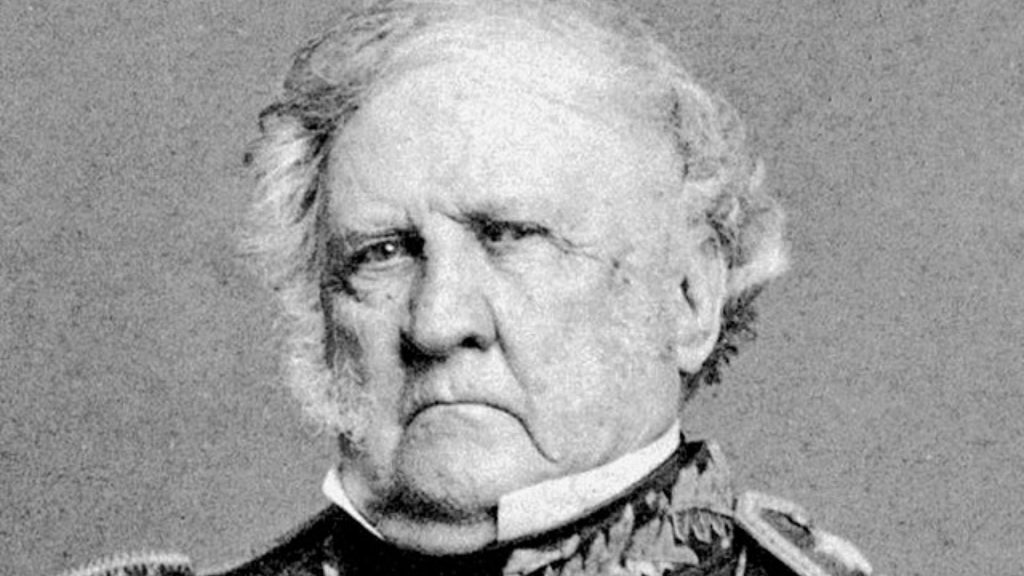
Insight: Winfield Scott, a prominent figure in American military history, held the esteemed brevet rank of Lieutenant General both before and during the Mexican-American War. A title previously held only by George Washington. His extensive military career greatly influenced early American military doctrine.
Question 18. Who is traditionally celebrated as the finest general that George Washington ever commanded?

A. Charles Lee
B. John Sullivan
C. Nathanael Greene
D. Henry Knox
Answer 18: C. Nathanael Greene

Insight: Nathanael Greene, from Rhode Island, was a standout general under George Washington in the American Revolution. Known for his strategic expertise, Greene’s leadership in the Southern Theater was pivotal in defeating the British.
Question 19. Which general from the Civil War era was court-martialed for going AWOL (absent without leave)?

A. George Custer
B. Stonewall Jackson
C. William Tecumseh Sherman
D. Ulysses S. Grant
Answer 19: A. George Custer

Insight: Civil War hero George Custer wasn’t all battlefield glory. After an unauthorized visit to his wife, he faced court-martial in 1867. This episode underscores Custer’s complicated nature, where personal choices clashed with military duty, and a lapse in judgment resulted in a year-long suspension.
Question 20. Which general’s combat skills disappointed President Lincoln, proving to be more reflective of his stature than his ego?
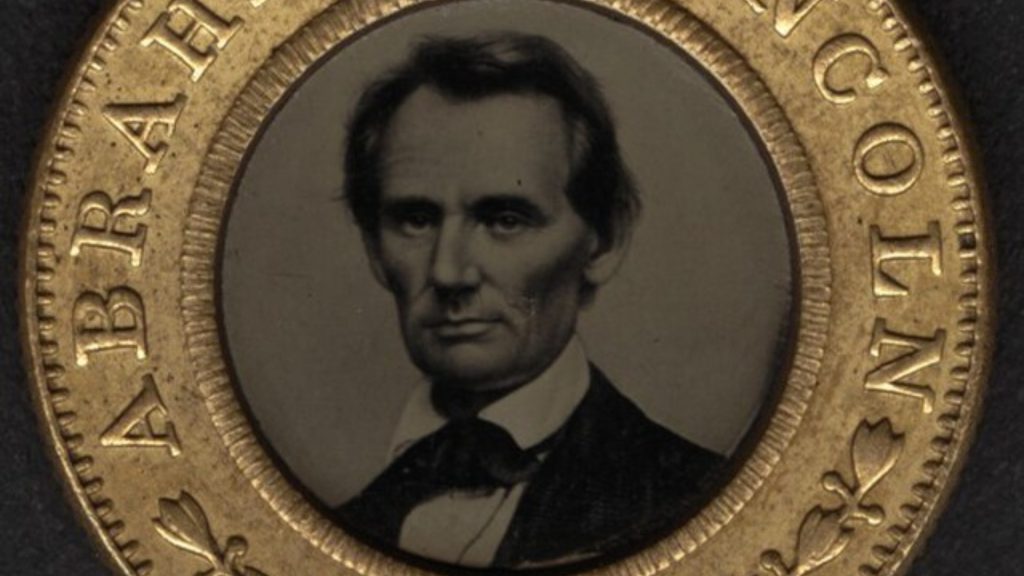
A. Stephen Douglas
B. John McClernand
C. George McClellan
D. Ulysses S. Grant
Answer 20: C. George McClellan

Insight: Despite his strong organizational skills and troop training abilities, Civil War general George McClellan, nicknamed “Young Napoleon,” frustrated President Lincoln with his battlefield caution. Lincoln famously called him out for having “the slows.” McClellan’s reluctance to fight aggressively led to disappointment, even though he possessed considerable confidence.
Question 21. Which general from the Confederate side was inadvertently shot by his own soldiers during the Civil War?

A. Sherman
B. Stonewall Jackson
C. Robert E. Lee
D. J.E.B. Stuart
Answer 21: B. Stonewall Jackson

Insight: In a tragic twist of fate during the Battle of Chancellorsville, Confederate General Stonewall Jackson was mistakenly shot by his own troops. Returning to camp, he was misidentified as the enemy. Though he initially survived, the severity of his wounds, including an amputated arm, led to complications that claimed his life eight days later.
Question 22. Which Union general has been criticized for his overly cautious approach during the Civil War?
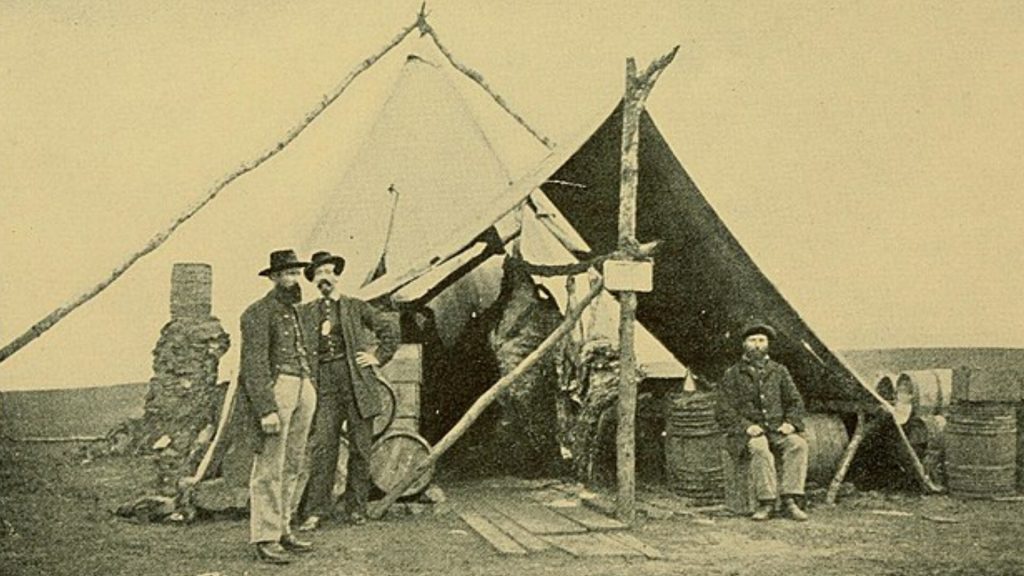
A. Patterson
B. Lee
C. McClellan
D. Meade
Answer 22: C. McClellan

Insight: George B. McClellan faced criticism for his cautious tactics. His reluctance to engage and hesitancy in battle resulted in unnecessary troop losses, earning him the nickname “Young Napoleon” alongside scrutiny for indecisive leadership.
Question 23. Who was the Union general, known as ‘Fighting Joe ‘, who led the Army of the Potomac at Chancellorsville, but was caught off guard and lost the battle?

A. McClellan
B. Hooker
C. Farragut
D. Schofield
Answer 23: B. Hooker

Insight: “Nicknamed ‘Fighting Joe,’ Union General Joseph Hooker commanded the Army of the Potomac at Chancellorsville. Despite the aggressive nickname, Hooker’s forces were surprised by Robert E. Lee’s tactics, resulting in a defeat that continues to shadow his military legacy.”
Question 24. John Wayne adopted his acting surname from General Wayne, a hero of the Revolutionary War. What nickname was this General known by?

A. Mad Anthony
B. Fuss And Feathers
C. Gentleman Johnny
D. Stonewall
Answer 24: A. Mad Anthony

Insight: General Anthony Wayne earned the nickname “Mad Anthony” for his fearless tactics in the American Revolution, not for any lack of sanity. His bold leadership and daring maneuvers made him a standout military figure, inspiring others like actor Marion Robert Morrison, who adopted “John Wayne” as his stage name to honor Wayne’s legendary courage.
Question 25. Which young US general directed the extensive bombing of Japan during WWII, from low-level incendiary attacks to playing a significant role in choosing the targets for the atomic bombs?

A. James H. Doolittle
B. John J. Pershing
C. Curtis E. LeMay
D. Omar N. Bradley
Answer 25: C. Curtis E. LeMay

Insight: General Curtis E. LeMay played a pivotal role in World War II, spearheading the strategic bombing campaign against Japan. His innovative tactics, including low-level incendiary attacks, inflicted significant damage on Japanese cities and contributed to the eventual weakening of Japan’s war efforts.
Question 26. True or False: General Norman Schwarzkopf commanded the land forces during the invasion of Grenada?

A. True
B. False
Answer 26: A. True

Insight: General Norman Schwarzkopf played a crucial role in commanding land forces during the invasion of Grenada in 1983, known as Operation Urgent Fury. Leading as a Major General at the time, his strategic planning and leadership skills were evident, setting the stage for his later prominent role in the Gulf War.
Question 27. Which legendary Union general was notoriously slow in mobilizing his troops, prompting President Lincoln to remark, “If he does not want to use the army, I would like to borrow it for a time”?
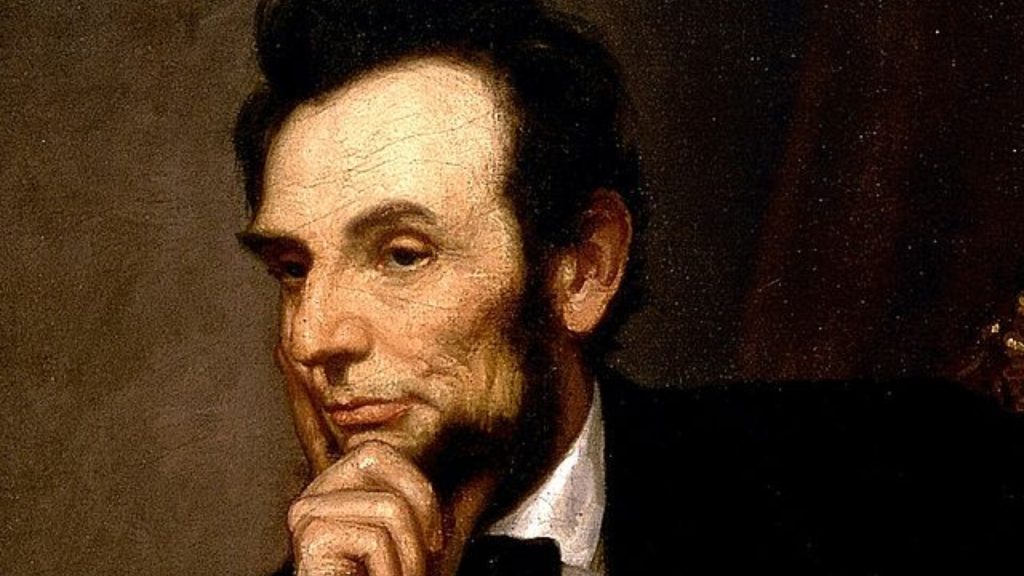
A. Ulysses S. Grant
B. Winfield Scott Hancock
C. George B. McClellan
D. William Tecumseh Sherman
Answer 27: C. George B. McClellan

Insight: Though admired by his troops for his organizational skills, General McClellan’s hesitation to fight frustrated President Lincoln. Despite building a strong Union army, McClellan’s cautious nature ultimately led to his dismissal, prompting Lincoln’s famous remark: “If he doesn’t want to use the army, I’d like to borrow it for a time.”
Question 28. Who was the first officer to don a uniform adorned with five stars?

A. Omar Bradley
B. Henry Arnold
C. Douglas MacArthur
D. George Marshall
Answer 28: D. George Marshall

Insight: George Marshall achieved a historic milestone on December 16, 1944, becoming the first five-star general in the U.S. Army. This promotion not only elevated his status but also aligned him with his European counterparts, solidifying America’s military leadership globally. Marshall’s exceptional service during World War II earned him this prestigious rank.
Question 29. What did the “Jeb” in Jeb Stuart’s name stand for?

A. Jeb Was His Real Name
B. Jacob Elliot Bridgewater
C. James Ewell Brown
D. James Edward Benjamin
Answer 29: C. James Ewell Brown

Insight: The “Jeb” in Jeb Stuart’s name stands for James Ewell Brown Stuart, a prominent figure in the American Civil War. As a Confederate Army general, Stuart’s mastery of cavalry tactics posed a significant challenge to Union forces. His initials, J.E.B., have become iconic, symbolizing his legendary status in Civil War history.
Question 30. Can you name the General who directed the Confederate troops during the First Battle of Bull Run?

A. Johnston
B. Beauregard
C. Lee
D. Hood
Answer 30: B. Beauregard

Insight: During the Battle of Bull Run, Confederate General P.G.T. Beauregard led his troops to victory on July 21, 1861. Despite initial Union successes, Beauregard’s strategic prowess turned the tide, securing a notable triumph for the Confederate forces in the early stages of the Civil War.
Question 31. Which World War II general was the only U.S. Lieutenant General to be killed during the Korean War?

A. Douglas MacArthur
B. Ned Almond
C. Walton Walker
D. William Dean
Answer 31: C. Walton Walker

Insight: General Walton Walker, a prominent figure in World War II, met a tragic end during the Korean War in 1950. His fatal accident near Seoul, South Korea, marked him as the sole U.S. Lieutenant General to perish in the conflict.
Question 32. Who was the former Superintendent of West Point that led the Confederate forces which initiated the Civil War by firing on Fort Sumter?

A. Robert E. Lee
B. George B. McClellan
C. Pierre G. T. Beauregard
D. Joseph E. Johnston
Answer 32: C. Pierre G. T. Beauregard

Insight: Pierre G. T. Beauregard’s brief stint as Superintendent of West Point lasted only five days before he resigned to join the Confederate cause at the onset of the American Civil War. This swift transition underscores the rapid and dramatic shifts in loyalty during the war’s early stages. Beauregard’s pivotal role in leading Confederate forces to fire upon Fort Sumter marked the official beginning of the conflict.
Question 33. In 1944, which command was Gen. George Patton assigned to?

A. U.S. 8th Air Force
B. U.S. 3rd Army
C. 2nd U.S. Cavalry Regiment
D. 1st U.S. Armoured Corps
Answer 33: B. U.S. 3rd Army

Insight: Building on his victories in North Africa and Sicily, General George Patton received a key assignment in 1944 of leading the U.S. 3rd Army. Under his command, the 3rd Army spearheaded a swift advance across Europe, playing a vital role in defeating Nazi Germany. This episode cemented Patton’s reputation as a skilled leader and showcased American prowess in World War II’s fast-paced warfare.
Question 34. Which general achieved a standstill against the same Indian tribes that, only a few days later, defeated Custer and his troops, and also fought against the Apache in the Southwest?

A. Nelson Miles
B. Winfield Scott
C. John Pershing
D. George Crook
Answer 34: D. George Crook

Insight: General George Crook played a crucial role in the Indian Wars. Before the infamous Battle of Little Bighorn, he faced the Sioux at the Battle of the Rosebud, demonstrating his ability to hold his ground against formidable foes. His successful campaigns in both the Great Plains and Southwest, employing negotiation and military action, highlight his adaptability and strategic acumen in the post-Civil War era.
Question 35. Who earned the nickname ‘Drill Master’ for their expertise during the American Revolutionary War?

A. General Charles Cornwallis
B. Baron von Steuben
C. General Horatio Gates
D. General Benedict Arnold
Answer 35: B. Baron von Steuben

Insight: Baron von Steuben, a Prussian military officer, earned the nickname ‘Drill Master’ for his crucial role in training the Continental Army during the harsh winter at Valley Forge. Despite the language barrier, he used interpreters to communicate instructions and instilled discipline in American troops. His rigorous drills and focus on battlefield tactics significantly improved the army’s performance in the American Revolutionary War.
Question 36. Which general sacrificed a limb during the Battle of Gettysburg?

A. Ambrose Burnside
B. George Meade
C. Daniel Sickles
D. George Pickett
Answer 36: C. Daniel Sickles

Insight: During the Battle of Gettysburg, General Daniel Sickles displayed immense bravery, sacrificing his right leg to a cannonball while leading his III Corps in the intense fighting at the Peach Orchard. His amputated leg was later donated to the Army Medical College in Washington, D.C., leaving a lasting legacy of valor and sacrifice.
Question 37. Which U.S. Vice President also became a General in the Confederate Army?

A. John C. Breckinridge
B. John Tyler
C. Aaron Burr
D. Joseph E. Johnston
Answer 37: A. John C. Breckinridge

Insight: John C. Breckinridge also holds the distinction of being the youngest U.S. Vice President at just 36. However, following his service under President Buchanan, Breckinridge’s loyalty to the Confederacy led him to a dramatic shift – from the halls of government to the battlefields of the Civil War, where he rose to the rank of Major General in the Confederate Army.
Question 38. Which individual was honored with a posthumous promotion to General of the Armies of the United States?

A. George Washington
B. John Pershing
C. Ulysses S. Grant
D. Stonewall Jackson
Answer 38: A. George Washington
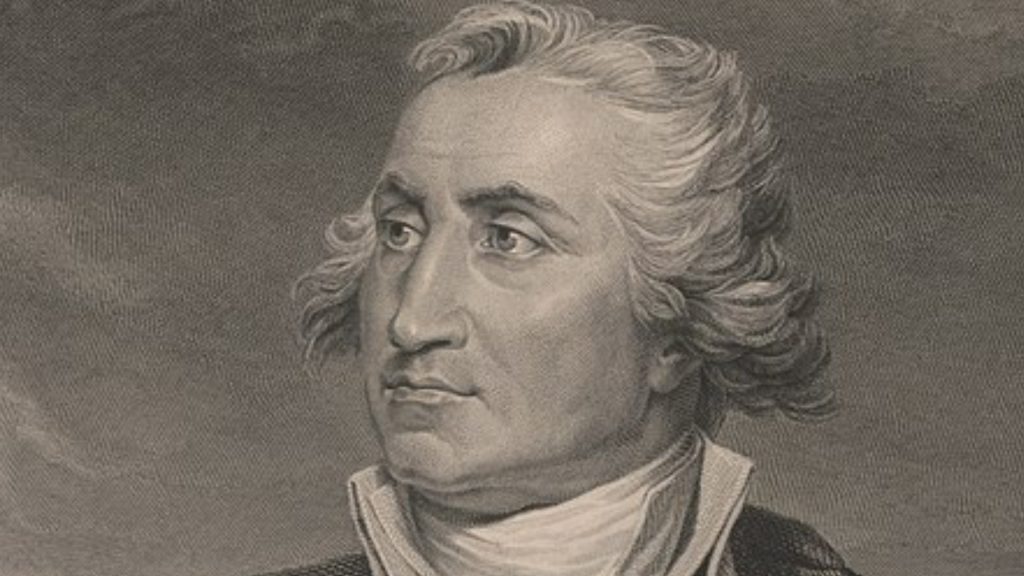
Insight: In 1976, during the Bicentennial celebrations of the United States, George Washington received a remarkable posthumous promotion to General of the Armies. This prestigious title, bestowed upon him as the first commanding general of the United States Army. Interestingly, the promotion did not assign a specific number of stars, adding to the symbolic significance of his revered status.
Question 39. Which general spearheaded the Union forces during the Battle of Chickamauga?
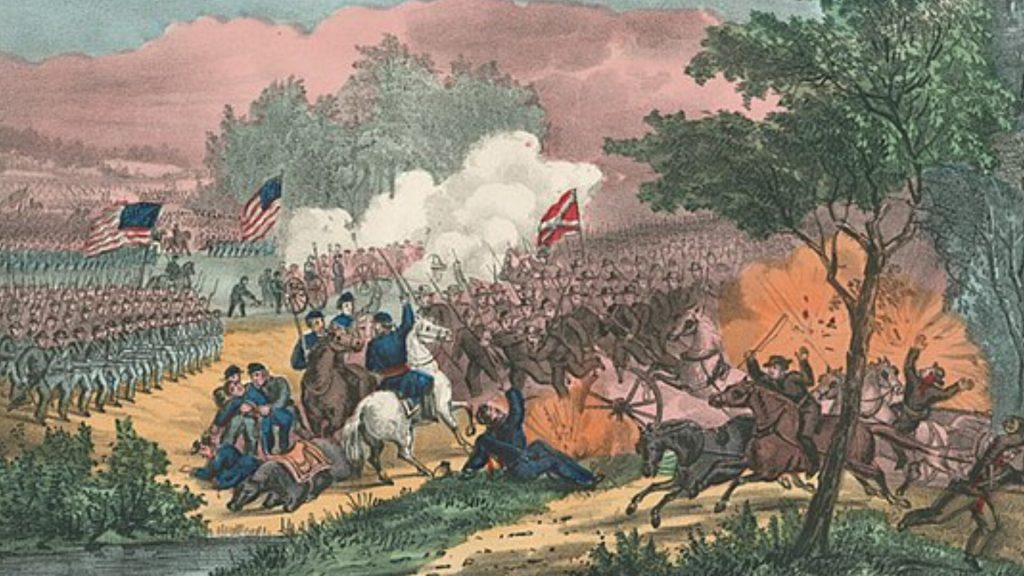
A. Rosecrans
B. Custer
C. Sherman
D. McClellan
Answer 39: A. Rosecrans

Insight: During the Battle of Chickamauga in September 1863, Union General William S. Rosecrans led the Army of the Cumberland against Confederate General Braxton Bragg’s forces in Georgia. Despite initial success, a communication error caused a gap in the Union line, leading to defeat. This battle, the second deadliest in the Civil War, left Rosecrans’ troops trapped in Chattanooga.
Question 40. Known as “The Swamp Fox” for his elusive tactics during the American Revolution, this individual was a brilliant cavalry officer who earned the rank of general. What is his name?

A. Francis Marion
B. Daniel Morgan
C. Thomas Sumter
D. Nathanael Greene
Answer 40: A. Francis Marion

Insight: Earning the nickname “The Swamp Fox,” Francis Marion outwitted the British in the American Revolution. Using the Carolina swamps as his hideout, Marion led surprise attacks with his militia and vanished without a trace. These guerrilla tactics frustrated the British and significantly aided the American cause.
Question 41. Can you identify the Union general who boldly claimed, “I’ve got Robert E. Lee right where I want him, and even God Himself cannot stop me from destroying him” before a significant battle?

A. General George Meade
B. General William Sherman
C. General Philip Sheridan
D. General Joseph Hooker
Answer 41: D. General Joseph Hooker

Insight: General Joseph Hooker, a Union Army officer during the American Civil War, famously claimed to have Confederate General Robert E. Lee “right where he wanted him” before the Battle of Chancellorsville in 1863. However, Hooker’s overconfidence led to his defeat, as Lee’s superior tactics prevailed despite being outnumbered. Despite his bold words, Hooker’s army failed to destroy Confederate General Lee, as he had assumed.
Question 42. Can you identify the Confederate general who led at the Battle of Kennesaw Mountain?

A. Hood
B. Beauregard
C. Johnston
D. Lee
Answer 42: C. Johnston

Insight: Joseph E. Johnston, a Confederate general, displayed strategic expertise at the Battle of Kennesaw Mountain against Union forces led by William T. Sherman. Despite being outnumbered, Johnston defended the mountain’s crest effectively, inflicting significant casualties on the Union. However, the Confederacy ultimately failed to halt Sherman’s advance on Atlanta.
Question 43. This quiet Georgian, held in high esteem by George Marshall alongside Bradley, assumed command of the 1st US Army HQ from Bradley on 1 August 1944. He led the 1st Army’s eastward push until VE Day, served under Bradley’s 12th Army Group during the Western Europe campaign, and was under Montgomery’s command for the Ardennes Offensive. Who was he?

A. William H. Simpson
B. Omar N. Bradley
C. Orlando Ward
D. Courtney Hodges
Answer 43: D. Courtney Hodges
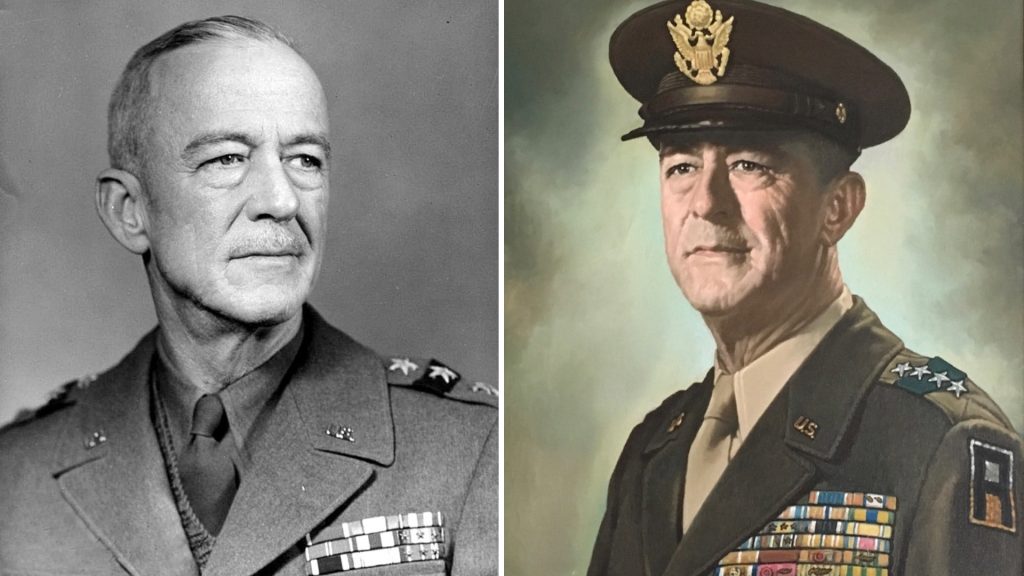
Insight: Less famous than others, General Courtney Hodges still played a key role in winning World War II in Europe. He took command of the 1st US Army and led them through tough battles, including the push into Germany and the Battle of the Bulge. His strong leadership under pressure helped the Allies win the war.
Question 44. In the American Armed Forces, which branch has never had an officer awarded the prestigious 5th star rank?

A. Navy
B. USMC
C. Army
D. USAF
Answer 44: B. USMC

Insight: The U.S. Marine Corps (USMC) is the sole branch of the American Armed Forces without an officer awarded the prestigious 5th star rank, known as General of the Armies. While other branches honor wartime accomplishments with this rank, the USMC remains without such recognition.
Question 45. Which Confederate general recruited Belle Boyd as a spy at the tender age of 17?

A. General Stonewall Jackson
B. General Braxton Bragg
C. General Robert E. Lee
D. General James Longstreet
Answer 45: A. General Stonewall Jackson

Insight: At only 17, Belle Boyd’s youthful charm and social skills made her a perfect Confederate spy. General Stonewall Jackson saw her potential and recruited her. Her intel helped him win key battles in the 1862 Valley Campaign, proving her worth to the Confederacy. Her daring and effectiveness at such a young age make her a Civil War legend.
Question 46. Following Gen. Colin Powell, who took on the role of Chairman of the Joint Chiefs of Staff?

A. Gen. Raymond T. Odierno
B. Gen. Norman Schwarzkopf
C. Gen. Eric K. Shinseki
D. Gen. John M. Shalikashvili
Answer 46: D. Gen. John M. Shalikashvili

Insight: Drafted in 1958, General John Shalikashvili rose through the ranks to become Chairman of the Joint Chiefs of Staff in 1993. Succeeding the highly respected Colin Powell, Shalikashvili’s dedication and experience made him the perfect choice, recommended by Powell himself and approved by President Clinton.
Question 47. Which major General met his demise during the siege of Quebec?

A. Jonathan Sullivan
B. Jonathan Thomas
C. Richard Montgomery
D. Edward Braddock
Answer 47: C. Richard Montgomery
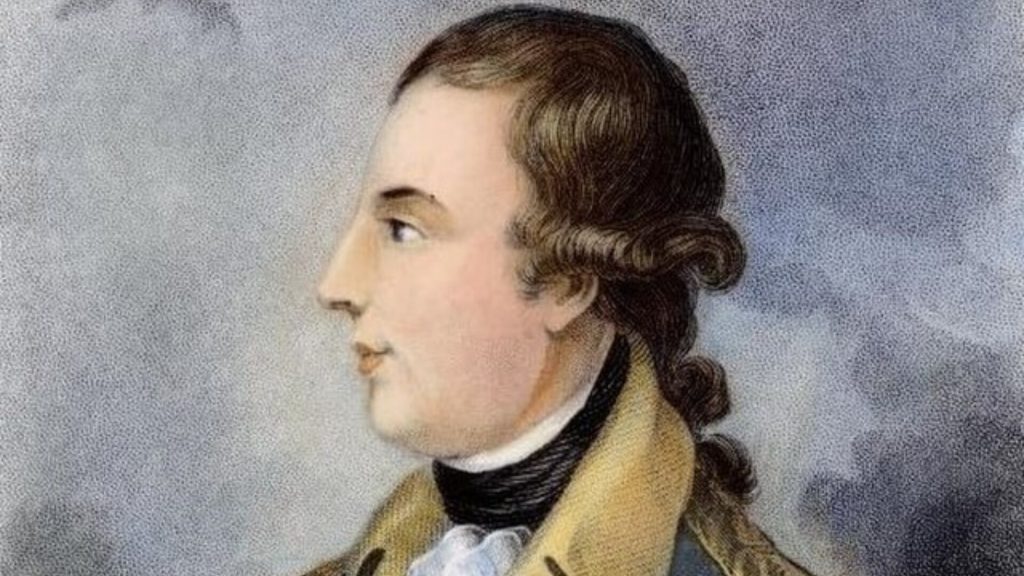
Insight: Richard Montgomery served in the British Army before switching sides to fight for the Continental Army in the American Revolutionary War. He led the capture of Montreal and later partnered with Benedict Arnold in an ambitious attack on Quebec in 1775. Tragically, Montgomery lost his life in this endeavor, but his bravery and commitment inspired others in the fight for American independence.
Question 48. Which major general of the American Revolution earned the title “Lord Stirling”?

A. William Alexander
B. Charles Cornwallis
C. Arthur Saint Clair
D. Henry Clinton
Answer 48: A. William Alexander

Insight: William Alexander, a wealthy New Yorker, played a key role in the American Revolution. Nicknamed “Lord Stirling” for his unproven claim to a Scottish title, he was a respected leader among Continental Army officers. His passion for the cause and battlefield skills made him a valuable asset to the fight for independence.
Question 49. What was the last military rank that George Washington held during his lifetime?

A. General
B. Major General
C. Colonel
D. Lieutenant General
Answer 49: D. Lieutenant General
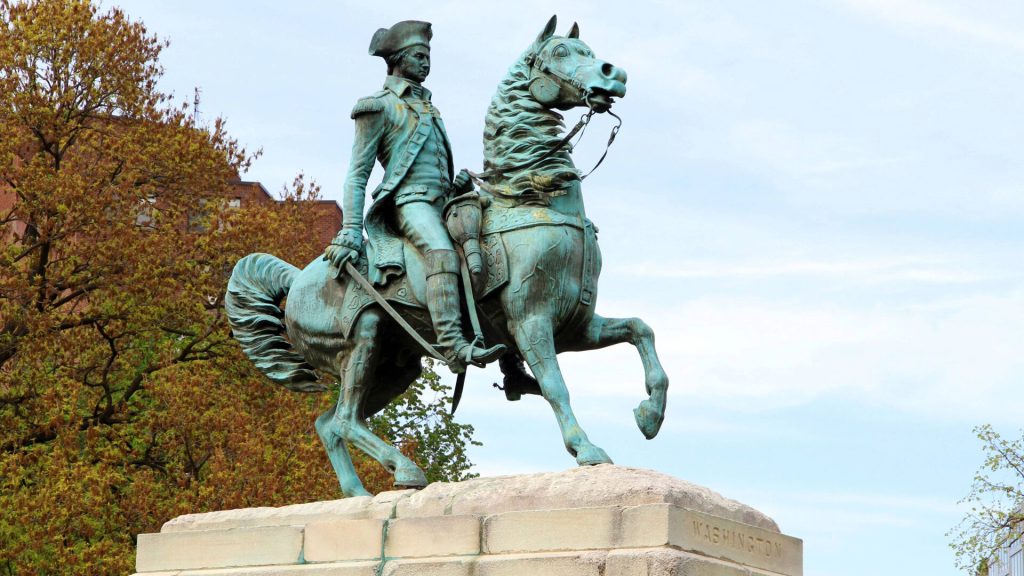
Insight: George Washington, despite leading the Continental Army to victory, never held a rank higher than Lieutenant General. Though honored posthumously with the highest rank, General of the Armies, his wartime service earned him just three stars. This difference highlights how military honors have changed throughout history.
Question 50. Who was the Civil War general that served as Governor of New Mexico during the Lincoln County War and had a meeting with Billy the Kid?

A. Winfield Scott Hancock
B. Lew Wallace
C. J. E. B. Stuart
D. George McClellan
Answer 50: B. Lew Wallace

Insight: Following his Civil War service, Lew Wallace assumed the role of Governor of the New Mexico Territory. During his tenure from 1878 to 1881, he grappled with the challenges of the Lincoln County War, striving to restore peace. Beyond his political and military endeavors, Wallace’s literary masterpiece “Ben-Hur: A Tale of the Christ” attests to his multifaceted talents and enduring legacy.
Question 51. Who was the Union General held responsible for the loss at the Second Battle of Bull Run?

A. William Starke Rosecrans
B. John Pope
C. Ambrose Burnside
D. Philip Sheridan
Answer 51: B. John Pope

Insight: In the bloody Second Battle of Bull Run, Union General John Pope’s army suffered a massive defeat, losing 15,000 men. This disaster not only crippled his forces but also shattered his reputation. President Lincoln, facing the brutal realities of war, relieved Pope of command. This episode highlighted the immense pressure on Civil War leaders and Lincoln’s own deep involvement in military strategy.
Question 52. Who famously stated, “The military don’t start wars. Politicians start wars”?

A. Gen. William Westmoreland
B. Gen. George Patton
C. Gen. Dwight D. Eisenhower
D. Gen. Douglas MacArthur
Answer 52: A. Gen. William Westmoreland

Insight: Military leader William Westmoreland believed soldiers followed orders, not the other way around. Politicians, in his view, decided on wars, and the military’s job was to carry them out. This highlights the clear line between political decisions and military action.
Question 53. Which US general led the initial Allied effort at Anzio in World War II, where despite achieving tactical surprise, Allied forces were unable to advance and remained pinned down for a month due to a German counterattack by FM Kesselring?

A. Ernest J. Dawley
B. Omar N. Bradley
C. John P. Lucas
D. George S. Patton
Answer 53: C. John P. Lucas

Insight: During the Anzio campaign in World War II, Major General John P. Lucas led the VI Corps. The landing at Anzio aimed to outmaneuver German forces and penetrate the Gustav Line to hasten Rome’s liberation. However, Lucas’s cautious strategy of securing the beachhead instead of swiftly advancing allowed the Germans to mount a robust counterattack. As a result, Allied forces were confined to the beachhead for four months, enduring fierce fighting and heavy casualties.
Question 54. In June of 1775, who ascended to the position of senior major general of the Continental Army, making him second-in-command to George Washington?

A. Philip Schyler
B. Horatio Gates
C. Artemus Ward
D. Charles Lee
Answer 54: C. Artemus Ward

Insight: Though not as well-known, Artemas Ward played a key role in the American Revolution. He was the first senior major general under Washington and among the first four appointed by Congress. Despite health struggles, Ward’s leadership and dedication to independence were unwavering. He even continued serving the young nation in Congress after the war.
Question 55. Which general did not die due to battlefield injuries?

A. Thomas “Stonewall” Jackson
B. J. E. B. Stuart
C. D. H. Hill
D. John Hunt Morgan
Answer 55: C. D. H. Hill
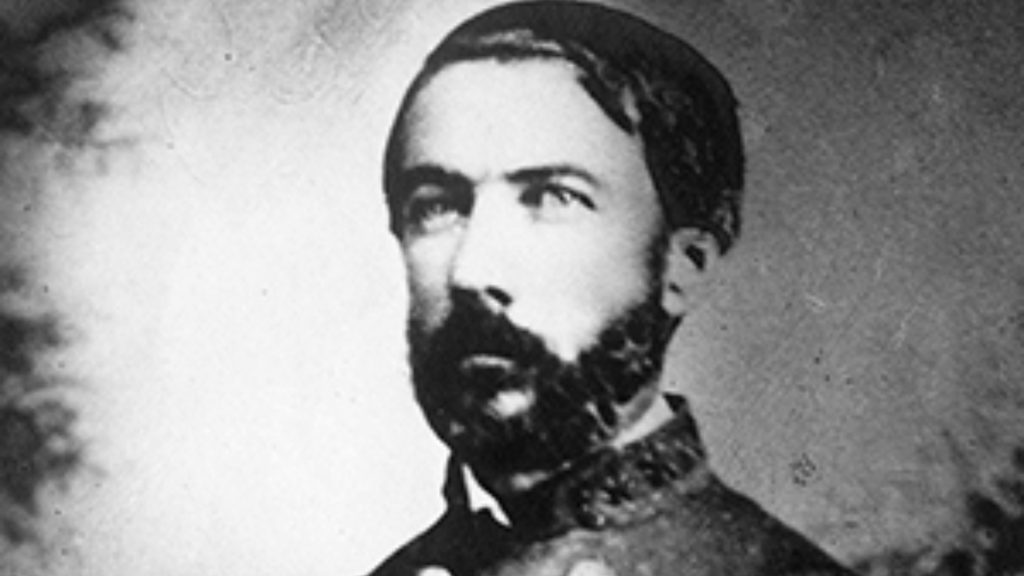
Insight: D.H. Hill defied the odds. Unlike many Civil War generals who perished in battle, Hill lived to see the war’s aftermath. This remarkable survival granted him a firsthand view of the Reconstruction era and a changed America.
Question 56. Which US general, known for leading the prestigious “Big Red One” infantry division through challenging battles in North Africa and Sicily, was relieved by “Ike” due to poor discipline but later commanded the “Timberwolf” division, thanks to George C. Marshall?

A. Theodore Roosevelt, Jr.
B. George S. Patton
C. Courtney Hodges
D. Terry de la Mesa Allen
Answer 56: D. Terry de la Mesa Allen

Insight: Terry de la Mesa Allen, a brave and skilled leader nicknamed “Terrible Terry,” led the “Big Red One” in North Africa and Sicily. Although his relaxed discipline ruffled feathers, General Marshall saw his talent and gave him another shot at leading the “Timberwolf Division.” Allen’s story highlights the challenges of wartime leadership, balancing battlefield success with following the rules.
Question 57. Which Union general was in command of the Federal Cavalry during the Battle of Gettysburg?

A. Meade
B. Reynolds
C. Pleasonton
D. Kilpatrick
Answer 57: C. Pleasonton

Insight: Major General Alfred Pleasonton led the Union cavalry at Gettysburg. He played a key role beforehand at Brandy Station, the war’s biggest cavalry fight. His leadership helped position the Union cavalry well, contributing to their Gettysburg triumph.
Question 58. Who was at the helm of “The Big Red One” US infantry division during the assault on Normandy?

A. Russell P. Hartle
B. Matthew B. Ridgway
C. Theodore Roosevelt, Jr.
D. Clarence R. Huebner
Answer 58: D. Clarence R. Huebner

Insight: A seasoned leader, Major General Huebner took charge of the “Big Red One” in 1943. He led the division through battles in North Africa and Sicily before D-Day, where their actions played a key role in liberating Europe. Huebner’s command proved instrumental in the success of the Normandy invasion, etching his and the division’s names in military history.
Question 59. Which New York general of German descent was celebrated for his unwavering determination, composure in combat, and a steadfast ‘no retreat’ policy during the American Revolutionary War?

A. Nicholas Herkimer
B. Friedrich von Steuben
C. Henry Knox
D. Peter Muhlenberg
Answer 59: A. Nicholas Herkimer

Insight: General Herkimer, a German-American leader during the Revolution, is remembered for his bravery at the Battle of Oriskany. Despite being seriously wounded, he refused to give up and continued to lead his troops. This act of resilience, pushing against a tree and lighting his pipe as his symbol, cemented his place as a revered figure in American military history.
Question 60. Which US general, known for his leadership of the 5th Army in Italy and overseeing difficult battles up the Italian ‘boot’, has had his reputation clouded by his intense jealousy of rivals and desire for glory?

A. George S. Patton
B. Lucian P. Truscott, Jr.
C. Mark W. Clark
D. John P. Lucas
Answer 60: C. Mark W. Clark

Insight: Despite his achievements, Lieutenant General Mark W. Clark’s legacy is often clouded by his personal flaws, including intense jealousy and a desire for personal glory. While leading the 5th Army in Italy during World War II, he achieved strategic successes but clashed with peers and prioritized his reputation over collaboration.
Question 61. Who was the US general that served as MacArthur’s chief airman, commanding all Allied Air Forces in the SW Pacific theater, carrier-based planes from the US 3rd and 7th Fleets, land-based planes of the 7th Fleet, B-29’s of the 20th AF, and operations of the RAF?

A. Curtis LeMay
B. Henry H. Arnold
C. Lewis H. Brereton
D. George C. Kenney
Answer 61: D. George C. Kenney

Insight: In the Pacific theater, General Kenney led the Allied Air Forces, incorporating planes from fleets and other countries. His innovative tactics, like skip bombing, boosted airpower’s effectiveness. Kenney’s leadership and vision were key to disrupting Japanese forces and aiding ground troops, ultimately contributing to the Allied victory.






